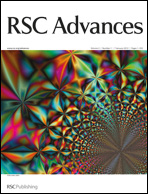The nuclear pores located on the nuclear envelope work as a selective barrier to nuclear import. The transport of large cargo molecules (larger than ∼40 kD) into the nucleus generally requires the aid of nuclear transport proteins, such as importins, which bind to nuclear localization signal (NLS) sequences in the cargo molecules and transport these molecules into the nucleus through the nuclear pore. In our previous paper, we showed that maltotriose(Glc3)-displaying quantum dots (QDs) can pass through the nuclear pore in digitonin-treated HeLa cells. The aim of this study is to clarify the mechanism of the nuclear import of maltooligosaccharide-displaying QDs (maltooligo-QDs). We prepared maltopentaose(Glc5) and maltoheptaose(Glc7)-QDs in addition to Glc3-QDs. The effect of the number of glucose units in the maltooligosaccharide on the rate of nuclear import of QDs has been explored by confocal laser scanning microscopy (CLSM). Further, we analyzed that the direct interactions of maltooligo-QDs to an internal protein in the nuclear pore (Nucleoporin62) using a surface plasmon resonance (SPR) system. We found that maltooligo-QDs with more than three glucose units (Glc3, Glc5 and Glc7-QDs) rapidly entered the cellular nucleus, and had a higher affinity to nucleoporin62 than those of PEG and Glc1-QDs. These data indicate that the interaction between nuclear pores and carbohydrates is the driving force behind the nuclear import of maltooligo-QDs.

You have access to this article
 Please wait while we load your content...
Something went wrong. Try again?
Please wait while we load your content...
Something went wrong. Try again?


 Please wait while we load your content...
Please wait while we load your content...